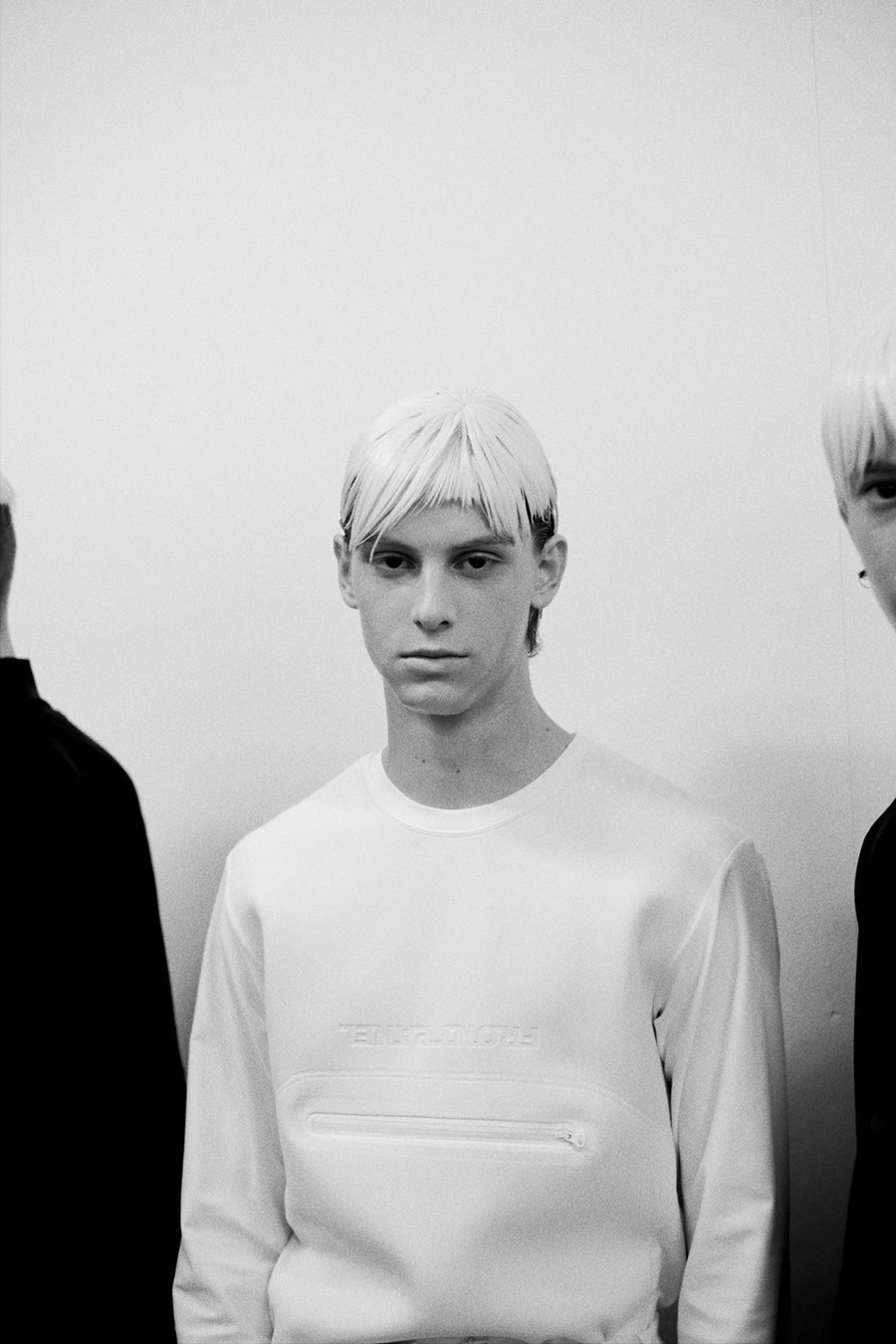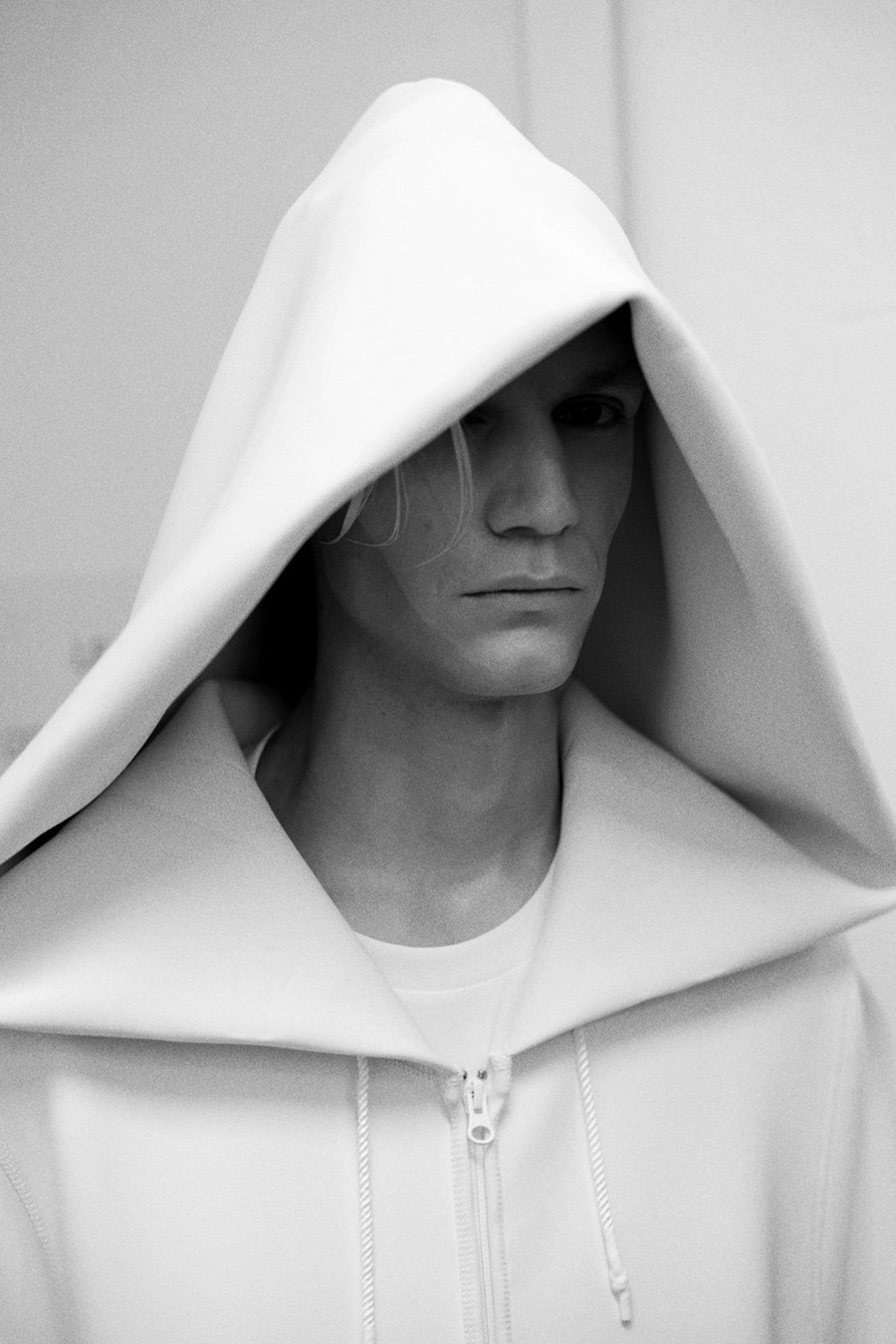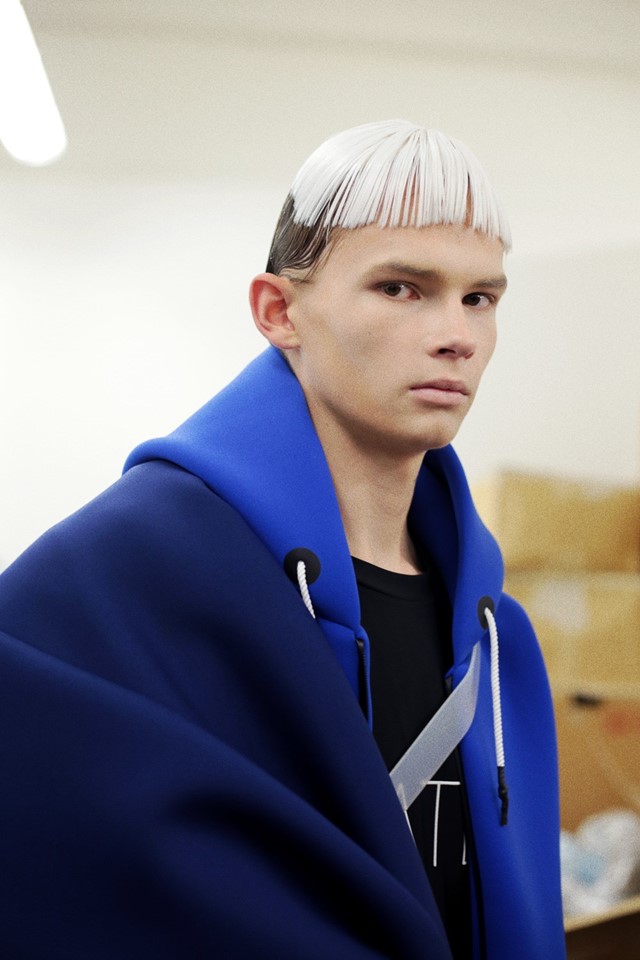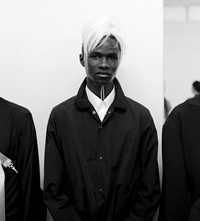Fumito Ganryu Is Back, and That’s a Good Thing for Menswear
- TextCalum Gordon
The Rei Kawakubo protégé just debuted his first independent collection – here, he opens up about the show and his vision for 21st-century clothing
Part of the charm of Comme des Garçons’ vast empire of brands and sub-brands is that it has always allowed for nooks and niches for labels to exist in. While many will know the peering eyes of Filip Pagowski’s love heart, the motif for the brand’s PLAY line, the crisp blue stripes of SHIRT, or the Post Soviet-skate stylings of Gosha Rubchinskiy, others brands in the Comme stable have always felt like a well-kept secret. Fumito Ganryu’s eponymous label was one of those. With the brand’s shows taking place in Tokyo, and only latterly included in Comme’s European showroom in Paris, it was stocked by just a handful of esoteric menswear stores around the world.
In April, writing for Another Man, Rob Nowill labelled it, ‘Comme’s most underrated brand’. This followed last year’s sudden announcement that the brand would cease to exist under the Comme umbrella, some ten years after it was first launched, with little information given as to whether it would ever be resurrected.
On Wednesday morning, we had our answer, with the Japanese designer debuting his first collection in Europe as a guest designer at Pitti Uomo, the Italian menswear tradeshow, which has hosted shows by JW Anderson, Visvim, and Jun Takahashi and Takahiro Miyashita’s The Soloist in recent seasons. It was also his first collection independent of Comme des Garçons.
“I always felt free at Comme des Garçons. So really the sense of freedom has not changed by becoming independent” – Fumito Ganryu
“I always felt free at Comme des Garçons. So really the sense of freedom has not changed by becoming independent,” the designer said over email after the show. Indeed the collection very much felt like a continuation of – rather than a radical departure from – the Ganryu aesthetic we have come to know. (The sculpted hair pieces worn by the models felt reminiscent of those created by Julien d’Ys for Rei Kawakubo’s Comme des Garçons Homme Plus shows). Save for the tags sewn into the garment’s neckline, all the signature traits were there – sportswear in unusual proportions, spliced garments, a mish-mash of neoprene and denim and bold primary colours.


“I reflected on what would be 21st-century clothing. My thought is that it is not only about being urban or contemporary, but about how we can interrelate and coexist with nature. With this in mind, I thought of what kind of clothing the 21st century would necessitate? This was the initial idea,” Ganryu said of his approach.
The show started, however, with a faux-pax. As New York Times style reporter Matthew Schneier noted on Twitter: “It may be that Fumito Ganryu, a Japanese designer, didn’t realize how this reads to American audiences. But opening your men’s fashion show with a white hooded robe is a real bad look.” It did genuinely seem like an honest mistake though – an attempt to create an excessively oversized hoodie, as opposed to courting controversy.
“I thought of what kind of clothing the 21st century would necessitate? This was the initial idea” – Fumito Ganryu
For this collection, there was a focus on trying to ignore gender altogether when designing, as well as loose concepts of “water” and “nature” woven throughout. But the work of the former Junya Watanabe pattern-cutter has always felt more aesthetically-led than conceptual – “I express myself better though my designs than words. I feel they are a more precise output,” Ganryu explained.


Above all, it was enjoyable to just see the Japanese designer’s output once more. He has a rare ability to create garments that are challenging but wearable, toying with mundane archetypes until they become fascinating and sort of futuristic – like a coach jacket with elements of traditional tailoring worked into it. There is a sense that perhaps with the increased exposure of showing in Europe, his designs will be able to find a larger audience – and maybe, hopefully, help ease us out of the irony-laden logomania currently dominating menswear and fashion at large.
It is interesting to note that, as with many of menswear’s main protagonists responsible for the current landscape, skateboarding was also Ganryu’s first introduction to fashion. Virgil Abloh and Gosha Rubchinskiy both regularly cite it as an inspiration, and just two weeks ago, Supreme’s non-designing owner James Jebbia won Menswear Designer of the Year at the CFDA Fashion Awards. “I would skateboard with an older group of skateboarders, who introduced me to the that fashion. When I tried the clothing for the first, I just felt this perfect fit,” said Ganryu, before adding, “on a visible level it is not an influence. Rather it is in spirit and mind that skateboarding is an influence.”
While the starting point may be the same as many of his peers, the result is very different – a little bit more challenging and crafted. And now, potentially, no longer confined to a small menswear niche.
















